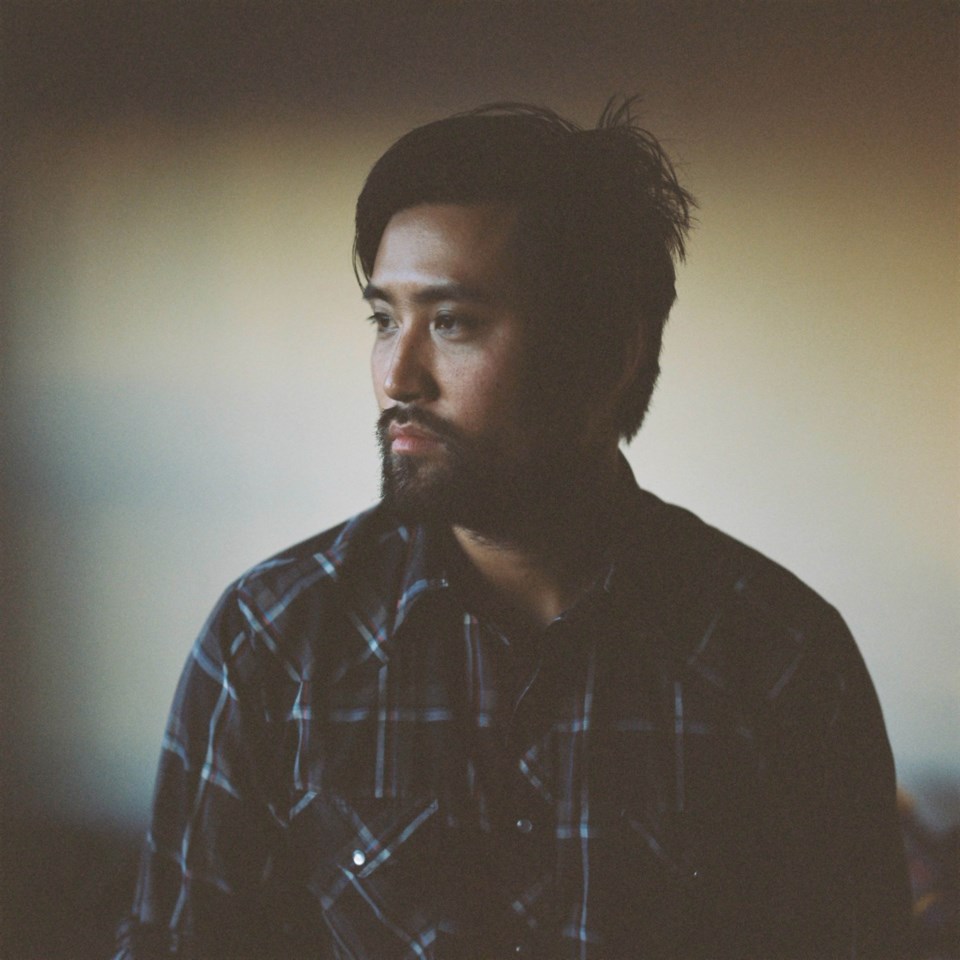“I’m not trying to make songs anymore” says Andrew Lee over a glass of red white at a busy Mount Pleasant watering hole. “I essentially hit record in the studio and recorded and wrote simultaneously. It’s mostly just me 100 per cent experimenting.”
The soft spoken Lee is talking about Holy Hum, his new ambient, neo-classical project with rotating members and no musical boundaries, unlike his previous band of 15 years, In Medias Res.
Holy Hum begins with an ending. In 2011, Lee’s father, an opera singer, was diagnosed with terminal cancer. Lee was on tour when he found out, supporting what would be In Medias Res’ final album, the ominously titled It Was Warm and Sunny When We First Set Out. He cancelled the remaining shows and flew out to the prairies to be by his father’s side.
In the final days, Lee would play composer Ralph Vaughn William’s piece “The Lark Ascending” on his cellphone to drown out the omnipresent humming of the hospital machines, a near unbearable sound when combined with neon hospital lights and the presence of death.
These quiet, sombre moments were the beginning of a new chapter for Lee, one that would have him changing his musical path, and leading toward discovering his own cultural identity.
“I wanted to figure out [where I came from],” says Lee. “My parents are both Korean, and I didn’t know anything about that culture. I grew up in mainly in Vancouver.”
Lee returned to Vancouver after his father’s death and began working on new music, this time with a different state of mind and plate of influences. He immersed himself in Korean music, classical and ambient – far from his indie post-rock roots.
“I think I had a moment with electric guitar, where I saw it as this thing that was representative of rebellious white males. It had this really masculine, aggressive association with it,” says Lee of his previous incarnation as an indie-rock guitarist in In Medias Res. “When I had this sort of return to my culture and my heritage, I realized that I really don’t identify with that.”
A friend loaned Lee records of ‘70s Korean psych music, “heartfelt is a good way to describe it”, and he sourced out his own as well, having his Eureka moment after seeing a photo of a man playing the gayaguem, a traditional Korean zither-instrument that looks a bit like a pedal steel placed on the floor.
“I saw an image of it, and I thought, holy shit, that’s me! I sort of play it like they play it, unconventionally, though it is traditional for them.”
Soon, after months of experimentation, Holy Hum was born. Featuring former members of In Medias Res, Rob Tornroos and Ryan Flowers, Holy Hum’s introduction came by way of a mysterious 18-minute documentary-like video of
Lee and his band, composing dark soundscapes in the studio of Phil Elverum’s (Mount Eerie) studio in Anacortes, WA. A few months later, Appendix C was released, Holy Hum’s hour-long debut.
To call it “ambient” music would be an over-simplification. It is an aural monomyth, calling the listener to adventure with celestial synthesizers, initiating the unknown with a thundering cello and arpeggiated low notes, and the crossing of the return threshold of shimmering string pads, leaving the listener feeling like he or she has been somewhere, or learned something. Its working title was “The Lark Ascending and Descending”, a reference to the Ralph Vaughn Williams piece he had played repeatedly back in the hospital.
“I wanted to write a composition that could have the same affect, but my own version of it. If you listen to the Ralph William’s song, you’ll probably see some of the similarities.”
Lee hopes to tour Asia with Holy Hum later this year, and is working on new music with his good friend and musical collaborator, the artist formerly known as Dirty Beaches, Alex Zhang Hungtai.
“Two guitars and two synths, and he put samples in of found street-scape sounds from Shanghai, and I incorporated sounds from a Seoul subway,” Lee explains. “It’s this meshing of metropolitan centres in Asia with synths and guitars. It’s a bit difficult to listen to…”
On March 13, Holy Hum will perform as one of several acts for Quiet City, a series of deep-listening concerts at Skylight Gallery, a typical venue for Lee, who opts for alternative spaces instead of clubs to perform in. You can expect a glorious evening of opalescent soundscapes, the surfacing of repressed emotions, and if you’re really lucky, a smattering of Holy Hum’s increasingly elder fan base, one that makes his eyes light up to talk about.
“I’m always surprised at the type of response I get,” he says. “[At CBC last year], I did a set of ambient music. I have never had so much response from people who are clearly retired or elderly. I always try to appeal to a wide audience, but I didn’t expect THAT wide!”
Holy Hum is the art of catharsis, the sound of creative freedom and great music to feel to. But if you ask Lee, he may tell you otherwise.
“I’m always trying to push myself and create new ways of expressing my ideas and emotions, and I feel like I’m always pushing against my limitations. When it’s done, I have a hard time deciding what it is. I don’t see this bullseye I’m going to hit, I’m just shooting into the air.”
• Holy Hum appears with Coppice (USA), Phonal, Ruhlmann & Clément, and Journeymann Trax, March 13 at the Skylight Gallery, 163 East Pender. Detail here.


